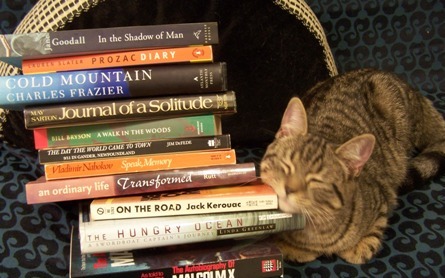There's a glaring ill in our society, that costs our government untold millions of dollars per year. Lives are torn apart, families decimated, and thousand of innocents suffer yearly (and I'm just referring to the
We discuss violence constantly, but oddly enough violence is almost always gender neutralized: Violence in Youth, Violence Against Women, Gang Warfare, Human Aggression, The Reasons for War, etc. Hardly ever it is pointed out that 90% or more of any of these violent acts are perpetuated by men and boys. Even if you visit the Bureau of Justice Statistics website, you'll be hard pressed to find statistics identifying the gender of the offender of violent crimes (aggravated assault, rape, murder). Other sources cite 85% or more of murders are committed by men, and almost all sexual assaults (whether the victim is male, female, or child) are committed by men. Of course the stats for aggravated assault are similar.
Why this deep seated reluctance to point out the gigantic, bloody elephant in the room? If you mention male violence in a discussion with a group of folks, often you'll get heated comments such as this: "Well, more inner city girls are becoming violent." "Most boys do not grow up to be violent." "There have been female serial killers too." While all these facts are true, they portray a skewed view of the big picture. Girls and women, though occasionally violent (5% to 13% of crimes), are hardly reeking havoc on society. The fact is that males are more violent, have been throughout history, and account for an overwhelming percentage (80-99.99%) of violent crime.
Studies will often examine other reasons for violence, such as cultural, societal, or environmental, rather than gender. No doubt environment and culture play a role in increasing the likelihood of violence. This accounts for the differences among countries on violent stats. The
'Male pattern violence' is a term to describe the unique reasons why men commit crimes, in comparison to women. Males commit crimes because of motivations of aggression, revenge due to humiliation, competition for dominance, competition with other males, and for feelings of ownership and entitlement towards females. Females (in most cases) end up in jail because of committing violent crimes in self-defense, or in concert with a male companion. Of course, this is not to say that no female has ever killed for revenge, or that any male has ever killed in self-defense. That's preposterous. This is just the preponderance of reasons why men or women are violent.
To further illustrate this point, think of almost any war that's ever been perpetuated in history. Almost all wars have occurred because of male pattern violence--- aggression, revenge, competition for dominance over land and resources, and competition with other males. Think of the Vikings, (the icon of male brutality) plundering
For varied reasons, we seem very fearful and reluctant to 'blame the offender.' This may be because we still live in a male-dominated society, and criticizing maleness in any way is taboo. Blaming the offender, in many minds, is blaming all men. Men are defensive because in their hearts I think all men do think and fantasize more about violence than women do. Men also enjoy watching violence and acting out violence more than women do. This brings us to our fear, that biology is destiny. If males are more violent because of gender, then this trend is inherited. Can we do anything about it?
If we look at our closest cousins, the apes and gorillas, we see similar patterns of male and female behaviors. Male chimpanzees are highly competitive with other males, over resources, territory, and ownership of females. We may laugh about it, but our apish friends are eerily similar to us, and this is after 5 million years of genetic separation. Given these observations, in my opinion there is very likely a biological component to male aggression. In terms of our evolution, it makes sense. For millenniums this trait has served our species well. Males kill, but they also protect the tribe, secure territory, and obtain resources. Females, with infants at their side, are unable to protect themselves.
Some people get very upset and defensive to suggest that males are biologically aggressive. Are we saying that all males are flawed and our society is doomed? I don't think so. In fact I consider this recognition and acceptance of male violence as critical to solving the problem. The fact remains that 85% of males never commit any violent acts. Though boys do seem more aggressive and active from birth, we see that this aggression in males can be channeled into appropriates venues like sports and games. What we have to do is recognize ‘male pattern violence’ and attack this as the problem.
Over the past several thousand years human brains have already evolved, due to the change in our environment and living conditions. In comparison to ancient times, many humans live in a far less violent world. Life was brutal, nasty and short during prehistoric times. The difficulty is that our civilization has advanced in the last 4,000 years so rapidly that our biology has yet to catch up. Yet I believe it will, and our survival as a species depends on our recognition of the ‘beast’ within. Since it more than likely will be a male launching that nuclear bomb to destroy the planet, or a male driving the bulldozer taking down the last tree, we best open our eyes to male violence.























